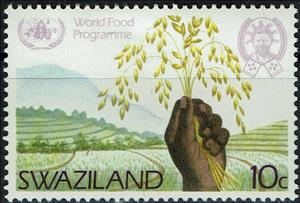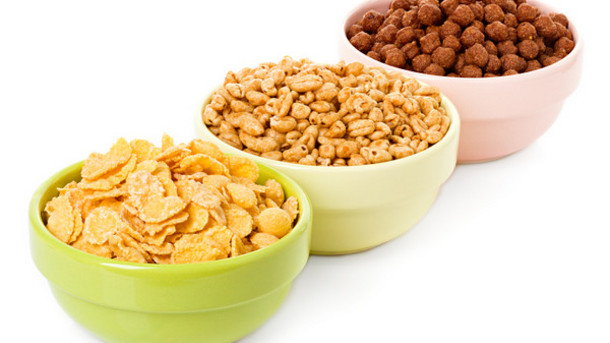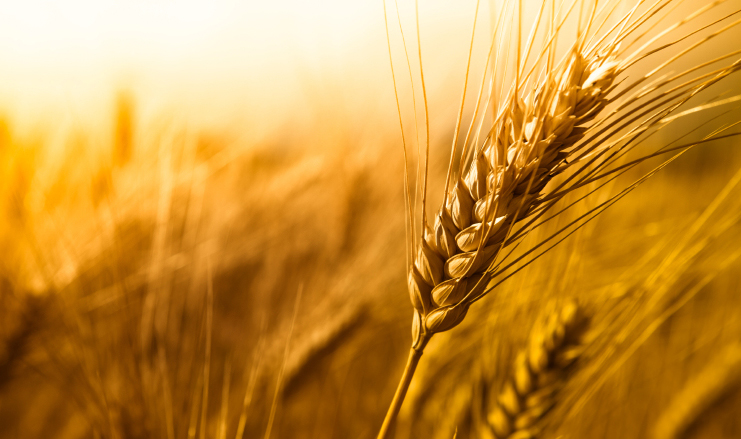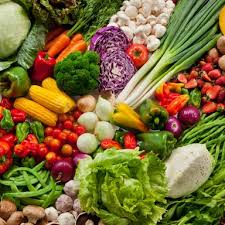Stamp: Rice (Swaziland 1983)
Rice (Swaziland 1983)
29 November (Swaziland ) within release World Food Program goes into circulation Stamp Rice face value 10 Swazi cent
| Stamp Rice in catalogues | |
|---|---|
| Stamp Number: | Sn: SZ 441 |
Stamp is square format.
Also in the issue World Food Program:
- Stamp - Maize face value 6;
- Stamp - Tractor face value 1;
- Stamp - Rice face value 10;
- Stamp - Cattle face value 50;
|
Data entry completed
53%
|
|
|---|---|
| Stamp Rice in digits | |
| Country: | Swaziland |
| Date: | 1983-11-29 |
| Print: | Offset lithography |
| Perforation: | 14 |
| Emission: | Commemorative |
| Format: | Stamp |
| Face Value: | 10 Swazi cent |
Stamp Rice it reflects the thematic directions:
A cereal is a grass cultivated for its edible grain. Cereals are the world's largest crops, and are therefore staple foods. They include rice, wheat, rye, oats, barley, millet, and maize. Edible grains from other plant families, such as buckwheat and quinoa are pseudocereals. Most cereals are annuals, producing one crop from each planting, though rice is sometimes grown as a perennial. Winter varieties are hardy enough to be planted in the autumn, becoming dormant in the winter, and harvested in spring or early summer; spring varieties are planted in spring and harvested in late summer. The term cereal is derived from the name of the Roman goddess of grain crops and fertility of grain crops and fertility
A crop is a plant that can be grown and harvested extensively for profit or subsistence. In other words, crop is a plant or plant product that is grown for a specific purpose such as food, fibre or fuel.
When plants of the same species are cultivated in rows or other systematic arrangements, it is called crop field or crop cultivation.
Food is any substance consumed by an organism for nutritional support. Food is usually of plant, animal, or fungal origin and contains essential nutrients such as carbohydrates, fats, proteins, vitamins, or minerals. The substance is ingested by an organism and assimilated by the organism's cells to provide energy, maintain life, or stimulate growth. Different species of animals have different feeding behaviours that satisfy the needs of their metabolisms and have evolved to fill a specific ecological niche within specific geographical contexts.
Flora is the plant life occurring in a particular region or time, generally the naturally occurring or indigenous—native plant life. The corresponding term for animal life is fauna. Flora, fauna and other forms of life such as fungi are collectively referred to as biota. Sometimes bacteria and fungi are also referred to as flora, as in the terms gut flora or skin flora.
Vegetables are parts of plants that are consumed by humans or other animals as food. The original meaning is still commonly used and is applied to plants collectively to refer to all edible plant matter, including the flowers, fruits, stems, leaves, roots, and seeds. An alternative definition of the term is applied somewhat arbitrarily, often by culinary and cultural tradition. It may exclude foods derived from some plants that are fruits, flowers, nuts, and cereal grains, but include savoury fruits such as tomatoes and courgettes, flowers such as broccoli, and seeds such as pulses.





